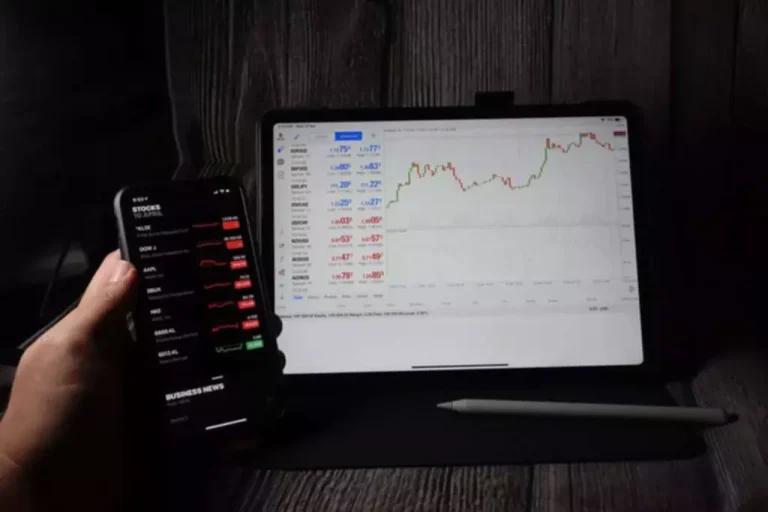After the war, at the end of the year 1945, the number had dropped to 358,000. In the following years, the population grew again and reached an all-time-high of 691,257 in 1963. According to the demographic forecasts for central Frankfurt, the city will have a population up to 813,000 within its administrative boundaries in 2035[34] and more than 2.5 million inhabitants in its urban area. The end of the war marked Frankfurt’s comeback as Germany’s leading financial hub, mainly because Berlin, now a city divided into four sectors, could no longer rival it. In 1948, the Allies founded the Bank deutscher Länder, the forerunner of Deutsche Bundesbank.
- The oldest and best-known university is the Johann Wolfgang Goethe University, with locations in Bockenheim, Westend, and Riedberg, and the university hospital in Niederrad.
- Market makers are entities willing to buy or sell assets at a particular time.
- Similarly, Uniswap and other protocols use the product of two tokens to set the price.
- The trains that run on the U-Bahn are in fact light rail (Stadtbahn) as many lines travel along a track in the middle of the street instead of underground.
- For the buyer to buy, there doesn’t need to be a seller at that particular moment, only sufficient liquidity in the pool.
- The overall tendency for higher temperatures can also be seen when comparing the climate data from 1981 to 2010 with the data from 2010 to 2020.
But, for users to be able to swap any amount of A or B at any time, the pool has to have sufficient amounts of A and B tokens – or, in other words, to have deep liquidity for both of the pool’s tokens. Therefore, every DEX operating on the AMM model is interested in having the deepest possible liquidity. Distributing new tokens in the hands of the right people is a very difficult problem for crypto projects. Basically, the tokens are distributed algorithmically to users who put their tokens into a liquidity pool. Then, the newly minted tokens are distributed proportionally to each user’s share of the pool. Liquidity pools are the basis of automated yield-generating platforms like yearn, where users add their funds to pools that are then used to generate yield.
German National Library
Similarly, Uniswap and other protocols use the product of two tokens to set the price. Liquidity pools enable anyone to contribute tokens and become a liquidity provider. By liquidity provider meaning doing so, they can receive fees collected from borrowers or traders that dip into the pool. Generally, the income they generate depends on their contribution to the pool.
Slippage is the difference between the expected price of a trade and the price at which it is executed. Slippage is most common during periods of higher volatility, and can also occur when a large order is executed but there isn’t enough volume at the selected price to maintain the bid-ask spread. Impermanent loss is inherently interwoven in the AMM concept and occurs when the price of a pool’s tokens changes compared to when they were deposited. Sometimes, impermanent loss could be negligible, but sometimes it could be huge. Also, be wary of projects where the developers have permission to change the rules governing the pool. Sometimes, developers can have an admin key or some other privileged access within the smart contract code.
What Are Liquidity Pools in DeFi and How Do They Work?
This type of liquidity investing can automatically put a user’s funds into the highest yielding asset pairs. Platforms like Yearn.finance even automate balance risk choice and returns to move your funds to various DeFi investments that provide liquidity. One of the liquidity pools’ most popular uses are decentralized exchanges operating on the automated market maker (AMM) model. As opposed to traditional, order-book exchanges, on AMM-based DEXes, users trade crypto with smart contracts rather than with each other, and rates are based on mathematical formulas. An operational crypto liquidity pool must be designed in a way that incentivizes crypto liquidity providers to stake their assets in a pool. That’s why most liquidity providers earn trading fees and crypto rewards from the exchanges upon which they pool tokens.

In 21st-century Frankfurt, more high-rise buildings and skyscrapers (e.g., Skyper, Opernturm, Tower 185, Seat of the European Central Bank, Taunusturm) emerged, but none have surpassed Commerzbank Tower. The most famous buildings from this decade are the Deutsche Bank Twin Towers at Taunusanlage, both 155.0 meters tall. The Frankfurter Hof is a landmark downtown hotel at Kaiserplatz, built from 1872 to 1876. It is part of Steigenberger Hotels group and is considered the city’s most prestigious.
Binance Removing XRP, FTM And 10 Other Liquidity Pools
If a liquidity provider intends to get back the liquidity they provided in addition to accrued fees from their portion, their LP tokens must be burned. A single liquidity pool typically holds 2 tokens and each pool creates a new market for that particular pair of tokens. DAI/ETH is a good example of a popular liquidity pool on a DEX like Uniswap.
This is exacerbated and made more frequent as the density of the city stores daytime heat overnight. It covers the area of Frankfurt Airport that had belonged to Sachsenhausen and the neighboring city of Mörfelden-Walldorf. Frankfurt is the largest city in the state of Hesse in the western part of Germany. In 1585, Frankfurt traders established a system of exchange rates for the various currencies that were circulating to prevent cheating and extortion. By the 19th century, the name Frankfurt had been established as the official spelling. Cryptopedia does not guarantee the reliability of the Site content and shall not be held liable for any errors, omissions, or inaccuracies.
Early history and Holy Roman Empire
In fact, depending on the pool, rewards to liquidity providers can even offset impermanent loss over time. The most common risk that liquidity providers could face is that of impermanent loss. In simple terms, impermanent loss means that the fiat value of a user’s crypto assets deposited to a pool could decline over time.

If you’re providing liquidity to an AMM, you’re probably exposed to impermanent loss. Make sure to read our article about it if you’re considering putting funds into a two-sided liquidity pool. To understand how liquidity pools are different, let’s look at the fundamental building block of electronic trading – the order book. Simply put, the order book is a collection of the currently open orders for a given market. Nine S-Bahn lines (S1 to S9) connect Frankfurt with the densely populated Rhine Main Region.
Why Are Crypto Liquidity Pools Important?
Additionally, the Panoramabad Bornheim has several water slides and other attractions that are sure to keep kids entertained. Other key liquidity pools such as BEL/USDT, FUN/USDT, GMT/BNB, GMT/ETH, HFT/USDT, IDEX/USDT, LEVER/USDT and MAGIC/BTC will also be removed. This market order price that is used in times of high volatility or low volume in a traditional order book model is determined by the bid-ask spread of the order book for a given trading pair. This means it’s the middle point between what sellers are willing to sell the asset for and the price at which buyers are willing to purchase it. However, low liquidity can incur more slippage and the executed trading price can far exceed the original market order price, depending on the bid-ask spread for the asset at any given time. In this article, you’ll learn how liquidity pools work under the surface and how that impacts the DeFi ecosystem, including investors, borrowers, and other participants.

Additionally, visitors can enjoy beautiful views of the river while they swim. In this example from Uniswap, the price of Token A increases from 1,200 to 1,203.03, which decreases the value of Token B to 399 to preserve the constant of 3. After the transaction, the liquidity shares are worth 3.015 after adding transaction fees. In some cases, there’s a very high threshold of token votes needed to be able to put forward a formal governance proposal. If the funds are pooled together instead, participants can rally behind a common cause they deem important for the protocol.
Swimming in Frankfurt: Pool Guide
It is the airport’s second-largest employer (19,800 workers in 2010).[59] Fraport also operates other airports worldwide, e.g., King Abdulaziz International Airport in Jeddah, Jorge Chávez International Airport in Lima and Antalya Airport. Frankfurt has the largest Moroccan community in Germany, numbering about 8,000 people, and the Rhine-Main area has about 20,000. Today Frankfurt has many Moroccan restaurants, companies, shops, mosques and hamams. Due to the popularity of Moroccan culture in Frankfurt, it also led many people from the Maghreb and other African countries to move to Frankfurt. The growing season is longer when compared to the rest of Germany, thus resulting in an early arrival of springtime in the region, with trees typically leafing out already toward the end of March.
The initial circulating supply represents 21.71% of the total token supply, equal to around 217 million NTRN. Before we go any further, it’s worth noting that there are DEXes that work just fine with on-chain order books. Binance DEX is built on BNB Chain, and it’s specifically designed for fast and cheap trading. This means that on a blockchain like Ethereum, an on-chain order book exchange is practically impossible. You could use sidechains or layer-two solutions, and these are on the way. However, the network isn’t able to handle the throughput in its current form.
Earning on liquidity pools
These tokens are used to initiate cryptocurrency trading by liquidating them. Liquidity pools are broadly relied upon by many decentralized exchanges to increase user participation and facilitate trade. Bancor introduced liquidity pools, but it became widely known when Uniswap adopted it. A liquidity pool is an automated market maker that provides liquidity https://www.xcritical.com/ to prevent huge asset price swings. To create a better trading experience, various protocols offer even more incentives for users to provide liquidity by providing more tokens for particular “incentivized” pools. Participating in these incentivized liquidity pools as a provider to get the maximum amount of LP tokens is called liquidity mining.
